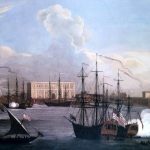
Some movie posters aren’t just marketing materials—they’re art. But here’s the twist: many of the most iconic movie posters draw directly from classic art movements like Art Deco, Surrealism, and Pop Art. Why do filmmakers do this? It’s not just about looking good; using established styles helps create visual impact, signal the film’s tone, and even add a layer of cultural commentary. In this article, we’ll dive into ten famous film posters that drew inspiration from classic art styles, unveiling the surprising history behind these designs.
The Connection Between Cinema and Classic Art Movements
Cinema and art movements share a history of mutual influence. Early 20th-century filmmakers frequently collaborated with visual artists, resulting in movie posters that were more than just promotional materials—they were reflections of the broader cultural landscape. This collaboration wasn’t limited to borrowing styles; it also meant adopting techniques. For instance, the use of lithography, which was popularized by Art Nouveau artists like Alphonse Mucha, became a staple of early movie poster design.
By borrowing familiar artistic elements, movie posters tap into viewers’ existing associations, which creates instant recognition and anticipation. It’s why retro cinema posters have such enduring appeal; they’re not just selling a movie, but also evoking entire artistic eras.
10 Movie Posters Inspired by Old Art Movements
1. “Metropolis” (1927) and Art Deco
The 1927 poster for Metropolis, created by Heinz Schulz-Neudamm, is a standout example of Art Deco. Schulz-Neudamm, a renowned German illustrator, drew from the movement’s signature traits—geometric patterns, luxurious metallics, and streamlined forms. What’s fascinating is that Art Deco, which emerged during the Roaring Twenties, represented the optimism of a society driven by progress and technology. In this sense, Metropolis wasn’t just borrowing Art Deco aesthetics; it was using the style to emphasize the film’s message about mechanization and the future.
Here’s an interesting fact: at the time of its release, Metropolis was the most expensive silent film ever made, with production costing more than 5 million Reichsmarks. This high cost also extended to its marketing, with the lavish poster playing a crucial role in the film’s branding. It’s no surprise that this vintage film poster has become one of the most valuable collectibles in cinematic history, with a copy fetching over $1.2 million at auction in 2012.
2. “Vertigo” (1958) and Op Art
Saul Bass, the graphic designer behind Vertigo’s iconic poster, was inspired by the Op Art movement—a style characterized by abstract patterns that create optical illusions. But there’s more to this design than meets the eye. Op Art’s goal is to engage the viewer’s perception, making them question reality, which aligns perfectly with Alfred Hitchcock’s thriller about obsession and psychological manipulation.
An interesting tidbit: Bass was known for his ability to communicate complex narratives with simple visuals. In the case of Vertigo, he said, “I wanted to create something that suggested the swirling downward spiral of the plot itself.” The hypnotic spiral not only sets the tone for the film but also reflects Op Art’s ability to provoke strong visual reactions. This poster remains a cornerstone of graphic design in movies, regularly cited in design textbooks and art courses.
3. “A Clockwork Orange” (1971) and Pop Art
Philip Castle’s poster for Stanley Kubrick’s A Clockwork Orange is a direct nod to the Pop Art movement, which was famous for blending high art with consumer culture. But there’s a deeper connection here: Pop Art, which emerged in the 1950s, often critiqued society’s obsession with consumer goods and media, themes central to Kubrick’s adaptation of Anthony Burgess’s novel.
The use of bold colors and exaggerated shapes in the poster isn’t just about catching the eye; it’s a reflection of Pop Art’s playful yet critical approach to modern life. As Castle himself said, “The aim was to provoke the viewer—to make them a little uncomfortable.” This aligns with the film’s controversial themes, making the poster not only a visual spectacle but also a comment on consumerism and violence in the media.
4. “Blade Runner” (1982) and Futurism
Blade Runner’s poster is heavily influenced by Futurism, a movement founded by Italian artist Filippo Tommaso Marinetti in 1909. Futurism emphasized speed, technology, and industrial progress, making it an ideal match for the film’s cyberpunk aesthetic. The poster’s neon-lit cityscape, angular forms, and high-contrast visuals reflect the bold, forward-thinking style of Futurism.
Here’s a lesser-known fact: the Futurists were fascinated by cities, seeing them as symbols of human achievement. This admiration for urban landscapes is evident in Blade Runner’s marketing materials, which use skyscrapers and flying cars to embody the movement’s love for modernity. The poster’s design wasn’t just about looking futuristic—it was about reflecting humanity’s obsession with progress and the ethical dilemmas that come with it.
5. “The Silence of the Lambs” (1991) and Surrealism
The poster for The Silence of the Lambs features a surreal element that has become iconic: a death’s-head hawkmoth over Clarice Starling’s mouth. The death’s-head, with its skull-like pattern, is a classic example of Surrealism’s interest in dream-like and unsettling imagery. But what makes this design particularly intriguing is its symbolism; the moth represents transformation, silence, and darkness—central themes in the film.
Designer Dawn Baillie explained that the aim was to “create a sense of unease, mirroring the psychological tension of the film.” The use of Surrealism isn’t just decorative; it serves to amplify the film’s psychological horror. Surrealist artist Salvador Dalí once said, “Surrealism is destructive, but it destroys only what it considers to be shackles limiting our vision.” This poster embodies that spirit, using surreal imagery to push boundaries and disturb the viewer.
6. “The Dark Knight” (2008) and Expressionism
Expressionism, known for its bold colors and emotional intensity, is evident in The Dark Knight’s poster. But what sets this design apart is its direct link to the German Expressionist films of the 1920s, like The Cabinet of Dr. Caligari. Expressionism often used distorted visuals to reflect inner turmoil, which is fitting for a film that explores the moral chaos of Gotham City.
An interesting connection: Director Christopher Nolan cited Expressionist films as a major influence on the film’s visual style, saying, “The aim was to create a sense of looming darkness.” The poster captures this by using chaotic lines, exaggerated contrasts, and a focus on the Joker’s distorted smile, making it a modern take on a classic movement that sought to reveal the darker aspects of the human psyche.
7. “Drive” (2011) and Neo-Noir/Retro Design
Drive’s poster is a blend of Neo-Noir and 1980s retro design, using neon-lit typography and a minimalist layout. But there’s more to the design than nostalgia; it’s a deliberate homage to the neon-drenched thrillers of the 1980s, like Thief and To Live and Die in L.A.. This approach not only sets the film’s tone but also establishes a visual connection to a specific cinematic era.
Designer James White explained, “The aim was to create a sense of mood and mystery, using neon as a visual metaphor for the film’s underworld.” The poster’s use of retro design isn’t just about evoking past styles; it’s about setting a mood that aligns with the film’s themes of isolation and violence.
8. “Her” (2013) and Minimalism
The minimalist design of the Her poster is not just about simplicity; it’s a reflection of the film’s themes of emotional isolation and connection through technology. The solid red background and Joaquin Phoenix’s close-up create a direct, almost confrontational connection with the viewer, echoing Minimalism’s focus on essential elements.
Minimalist artist Donald Judd once said, “Simplicity is complexity resolved,” and this poster captures that sentiment. By stripping away any distractions, the design emphasizes the character’s vulnerability and the film’s intimate tone, making it a standout example of how minimalist art can enhance emotional storytelling in movies.
9. “The Grand Budapest Hotel” (2014) and Rococo
Wes Anderson’s The Grand Budapest Hotel poster is a vibrant homage to Rococo, characterized by its ornate details and light-hearted elegance. But there’s more to this design than whimsy; Rococo’s decorative style was often used to distract from the harsh realities of life, aligning with the film’s themes of nostalgia and escape.
Art historian Rosalind Krauss noted, “Rococo is about surface and style, creating a sense of delight.” The poster’s pastel colors and intricate details don’t just set the tone for the film; they reflect Rococo’s playful, escapist spirit, making it one of the most distinctive vintage film posters of recent years.
10. “Black Panther” (2018) and Afrofuturism
The Black Panther poster is a landmark in Afrofuturism, a movement that combines African cultural elements with futuristic themes. This design doesn’t just use traditional motifs; it reimagines them in a high-tech context, aligning with the film’s vision of Wakanda as a technologically advanced yet culturally rooted society.
Ytasha Womack, an expert on Afrofuturism, said, “It’s about reclaiming African heritage while imagining new possibilities.” The Black Panther poster isn’t just visually striking; it’s a statement about representation and identity, making it one of the most iconic movie posters of the modern era.
Why Art Movements Make Movie Posters Stand Out
Art movements provide movie posters with a rich visual language that helps them resonate on multiple levels. Whether it’s the surreal disquiet of a Dalí-inspired design or the elegant lines of Art Deco, these influences don’t just sell movies—they invite deeper interpretation. By drawing from established art styles, designers create posters that become enduring pieces of culture.
FAQs
- What makes a movie poster iconic?
- An iconic movie poster has lasting cultural impact and captures the film’s themes effectively.
- Which art movement inspired the “Metropolis” poster?
- The Metropolis poster is inspired by Art Deco, known for its geometric shapes and sleek lines.
- How does Surrealism impact movie posters?
- Surrealism introduces dream-like, bizarre imagery that enhances the psychological impact of a poster.
- Why do filmmakers use classic art styles in posters?
- They use familiar art styles to evoke nostalgia, establish tone, and engage viewers more deeply.
- Are vintage film posters valuable?
- Yes, they are highly collectible and often increase in value, making them sought-after items for collectors.
Key Takeaways
- Iconic movie posters draw deeply from classic art movements, creating strong visual identities.
- Designs inspired by these movements often provide cultural commentary, adding layers of meaning.
- Using familiar art styles makes posters memorable and sometimes collectible.
- Blending historical art with modern techniques enriches film marketing and storytelling.




